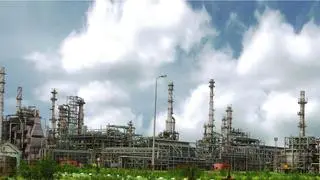Tata Motors on Thursday posted a consolidated net profit of ₹1,738.30 crore in the quarter ended December 31, 2019. It had posted a consolidated net loss of ₹26,992.54 crore in the corresponding quarter last year due to a one-time cash charge for asset impairment of Jaguar Land Rover.
Total revenue from operations of the company stood at ₹71,676.07 crore during the quarter under review — down by 6.81 per cent from the year-ago period’s ₹76,915.94 crore.
JLR turnaround
The consolidated results benefited from JLR’s recovery in China and Project Charge — JLR’s restructuring programme that had begun early in this fiscal — but it was offset by the decline in medium and heavy commercial vehicles (M&HCV) and stock reduction in India, said Tata Motors.
Tata Motors said that while the turnaround in JLR continues, the market decline in India, particularly i M&HCV, and the impact of the BS-IV stock reduction continue to affect the business at the domestic level.
JLR continued its turnaround and transformation journey with another quarter of strong delivery, Tata Motors said. China continues to improve gradually, while Project Charge is well ahead of plans having already delivered £2.9B so far, it said.
Despite the many challenges presently facing the industry, JLR has continued to expect improved profitability and cash flow for the financial year ending March 31, 2020 with an EBIT margin of around 3 per cent. However, the developing situation with the coronavirus could have some impact on this, Tata Motors said.
During Q3, when it comes to JLR, revenues increased to £6.4 billion, which is up 2.8 per cent year-on-year. While total retail sales fell 2.3 per cent, sales in China continued to recover (up 24.3 per cent) and sales in North America increased by 1.1 per cent, it said.
Project Charge+, the new phase of Project Charge, has been formally launched. It will primarily target cost savings and deliver a further £1.1 billion (£0.4billion in Q4 FY20 and £0.7 billion in FY21) of cost and cash flow improvements for a total of £4 billion of improvements by March 2021, it said.
“In the third quarter Jaguar Land Rover sustained year-on-year revenue and profit growth as we continued to transform our business. Conditions in the automotive industry remain challenging but we are encouraged by the recovery in our China business and the success of the new Range Rover Evoque,” said Ralf Speth, JLR Chief Executive. JLR’s improving financial results and the cost and cash flow achievements of Project Charge will support the next phase of its pipeline of new vehicles and technologies, he added.
Standalone numbers
As for Tata Motors’ standalone, including joint operations, it said that growth continues to be impacted by subdued demand following the general economic slowdown, higher axle loads, liquidity stress and low freight availability for cargo operators. The company’s turnaround plans will be focussed on securing ecosystem viability and improving retail growth, it said.
In the third quarter of this fiscal, wholesale volumes (including exports) decreased by 24.6 per cent to 129,185 units. In the domestic market, M&HCV trucks de-grew 47.7 per cent, ILCV trucks de-grew 15.7 per cent, SCV & Pick Ups de-grew 6.1 per cent and CV Passenger de-grew by 25.6 per cent. Domestic PV volumes were down 26 per cent, said Tata Motors.
“The downturn in the automotive industry continued in Q3 as the economy slowed down. Despite gaining sequential market shares in M&HCV, ILCV and SCV this quarter, our financial performance was impacted due to the downturn coupled with the inventory corrections we took to get ready for BS-VI,” said Guenter Butschek, CEO and MD, Tata Motors.
Its focus on retail acceleration and system stock reduction helped it achieve a multi-quarter low inventory level in CV and PV, while simultaneously getting ready for a smooth transition to BS-VI, he added.
As the sales upbeat of the festive months could not sustain, we remain concerned about the intrinsic demand and weak consumer sentiment, said Butschek.
However, Tata Motors expects a perceptible improvement in demand outlook as the infrastructure investments announced by the government pick up pace, he added. “We also anticipate further measures in the Budget to boost consumer sentiment and spur growth,” he said.







Comments
Comments have to be in English, and in full sentences. They cannot be abusive or personal. Please abide by our community guidelines for posting your comments.
We have migrated to a new commenting platform. If you are already a registered user of TheHindu Businessline and logged in, you may continue to engage with our articles. If you do not have an account please register and login to post comments. Users can access their older comments by logging into their accounts on Vuukle.